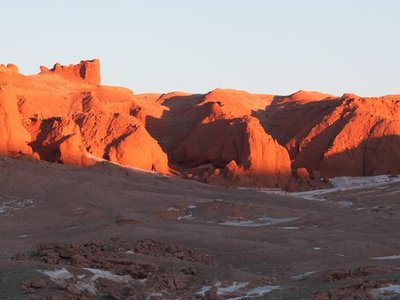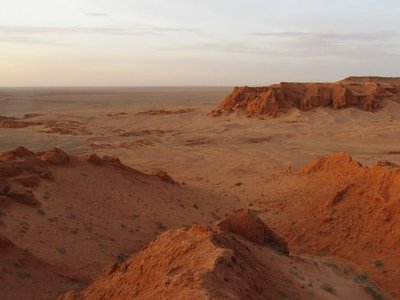Flaming Cliffs


In the evening, these desert
cliffs glow with a fiery red light that seems to mimic the radiance of the setting sun. The cliffs are best seen from below or across the escarpment. But no matter where you stand or what time you visit, you can still witness the breathtaking magnitude and raw beauty of the place come to life.
The local geology is just as captivating as the cliff’s blazing light show. This landscape within the Gobi Desert is arguably among the most important sites for dinosaur fossil hunters, and research around the cliffs has proven to be particularly fruitful.
Dinosaur eggs were first discovered in this area in the 1920s, and a fossil of a Protoceratops and a Velociraptor locked in a fight were unearthed in the 1970s. To date, paleontologists are finding important fossils in the surrounding area.
The Flaming Cliffs are a prime example of what’s known as a Djadochta Formation, layers of sand and calcareous matter. Even by geological standards, the cliffs are an ancient formation, with the best estimates clocking their birth at 71 to 75 million years ago.
Another fun fact: The Flaming Cliffs are also called
Bayanzag
, which means “rich in saxaul,” one of the few plants that can survive the extremes of the Gobi: extremely cold, extremely hot, and extremely arid. Saxaul is a thorny shrub that is better left untouched. Camels, however, seem partial to it.